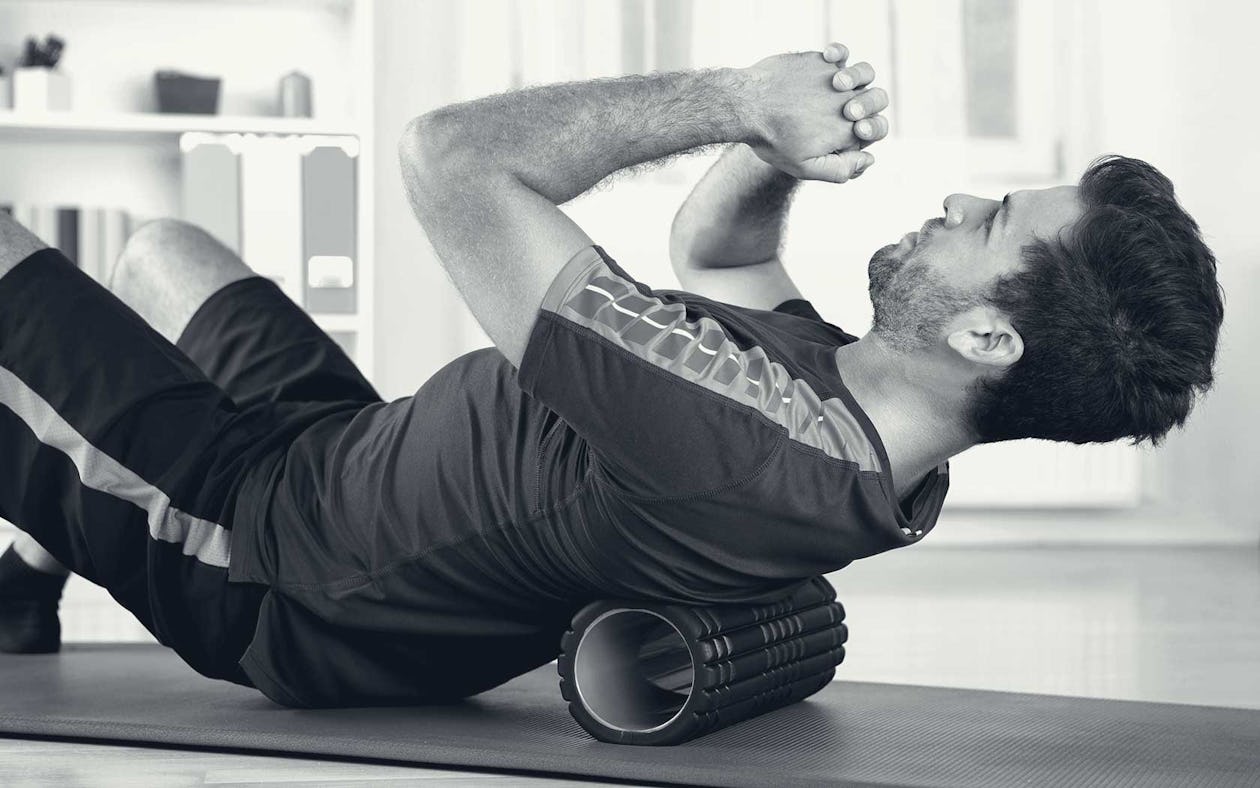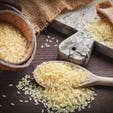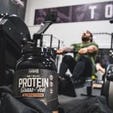You don’t get stronger by working out. You get stronger recovering from the workout, meaning that the 23 hours you spend outside of the gym are just as important as the one you have in it.
And the term “recovery” refers to several things, from the nutrition, your muscles get to your body’s ability to control inflammation, restore normal function, and maintain overall health in spite of the stress that your training imposes. Just taking an “off day” ain’t enough.
Here’s our guide (in no particular order) to all the ways you can recover faster and more fully build the greatest amount of strength, muscle, power, and endurance.
Post Workout Recovery Tip #1: Eat Protein and Carbs

Muscles need two main things to recover: protein, the raw material used to build muscle mass, and carbohydrate, which is stored as glycogen and serves as the muscles’ main source of energy during exercise.
Much has been written about the so-called “post-workout window,” in which a certain amount of both nutrients should be consumed within a particular period after training to optimize gains, but the research supporting this is conflicting.
The recommendations are also different depending on the type of training you do.
A 2012 review in the Journal of the International Society of Sports Nutrition concluded that to maximize muscle gain from strength training, “protein dosed at 0.4–0.5 grams per kilogram of lean body mass at both pre- and post-exercise is a simple, relatively fail-safe general guideline…
“For example, someone with 70kg of LBM [about 155 pounds of fat-free body weight] would consume roughly 28–35g protein in both the pre- and post-exercise meal.
“Exceeding this would have minimal detriment if any, whereas significantly undershooting or neglecting it altogether would not maximize the anabolic response.”
Pre- and post-workout meals, the authors decided, should not be separated by more than three to four hours. As far as carbohydrates go, the authors recommend merely hitting the amount your body needs over the course of the day according to your goals—there’s no need to time it.
When it comes to endurance training, the science is a little more firm. The Journal of Strength and Conditioning Research found that athletes should consume around 0.8 grams carbohydrate per kilogram of body weight [about 55g for a 155-pounder], and 0.4g protein per kg [30 grams in the same example] every hour for four to six hours post-exercise.
Post Workout Recovery Tip #2: Get Cold
Athletes jump into ice baths to reduce inflammation after competition, and if you’ve ever been to a European-style bathhouse, you know how invigorating alternating trips between a hot sauna and cold pool can be.
Cold-water immersion and contrast baths have been used for generations for a multitude of health benefits, including boosting the immune system.
In 2013, the journal Plos One pooled data from 13 different studies and found that contrast baths resulted in significant reduction of muscle soreness, and it preserved strength—when it was tested at various intervals up to 96 hours after training—leading the researchers to conclude that contrast therapy is better for recovery than rest alone.
If you don’t have time for a bathhouse or don’t feel like filling your bathtub with ice cubes, you could try a cryotherapy chamber.
Don Saladino, a trainer to pro athletes and celebs (including Keegan Bradley and Blake Lively) in New York City, has one in his clubs (driveclubs.com). “It’s very similar to a standup tanning bed, but your head is exposed,” says Saladino. “Temperatures can range from –220 to –270 degrees Fahrenheit.”
According to him, the fact that chamber treatments take a mere three minutes make it the most efficient form of cold therapy. But beware: most places average $70 for the privilege.
Post Workout Recovery Tip #3: Foam Roll and Stretch

Self-myofascial release (SMR), commonly referred to as “foam rolling” because it’s most often done with a foam roller, isn’t just a must before workouts. It can be useful right afterward and on days you don’t train too.
The exact mechanisms by which SMR works are still a mystery, but most experts agree that it is useful for improving range of motion by relaxing tight muscle groups and promoting blood flow.
A 2014 study in Medicine & Science in Sports & Exercise looked at the effects of foam rolling performed after workouts, one of which consisted of 10 sets of 10 squats—a surefire formula for sore legs.
The result? Subjects who rolled had less muscle soreness afterward compared to a control group, and they enjoyed improvement on their vertical jump, as well as increased muscle activation and range of motion.
Ben Bruno, an LA-based trainer to pro athletes and celebrities, including the NBA’s Roy Hibbert and supermodel Kate Upton (benbruno.com), recommends rolling the upper back, lats, piriformis (the side of your glutes), and quads on your rest days. “Do ten passes with the foam roller,” or spend at least 30 seconds on it per muscle, says Bruno.
Follow up the rolling with stretching to take advantage of the increased range of motion that the rolling provides, focusing extra attention on the lats, pecs, hip flexors, groin, and calves—the most commonly tight areas. “Hold the stretches for 15–20 seconds.” You’ll go back to your regular workouts moving and feeling better.
Post Workout Recovery Tip #4: Take Colostrum
Colostrum is a milky fluid that mammals produce to nurse young for the first few days after birth before real milk is made in the mother’s body. It contains various nutrients and antibodies that promote health and help fight bacteria, but nutrition scientists believe it may also improve body composition in adult athletes.
A study in the journal Nutrition observed men and women who supplemented with colostrum while performing aerobic and heavy resistance training. After eight weeks, subjects saw significant gains in lean body mass compared to a control group.
Post Workout Recovery Tip #5: Drink Coconut Water

The water found in young green coconuts has been enjoyed as a beverage in South America for eons, but the past decade has seen it get credit as a sports drink.
In fact, it’s a natural and arguably suitable replacement for leading drinks like Gatorade, which packs about twice the sugar.
Studies have shown that coconut water helps rehydrate the body after activity to about the same degree that sports drinks and even water alone do, as well as provide essential electrolytes like potassium and sodium which are lost through sweat.
According to one study in the Journal of Physiological Anthropology and Applied Human Science, subjects who drank coconut water after exercise experienced less nausea, fullness, and stomach upset than those who consumed a sports beverage.
Post Workout Recovery Tip #6: Do Active Recovery Workouts
Having light sessions on days between your toughest workouts can drive blood into the recovering muscles, which provides nutrients and carries waste products out. They’re also a chance to practice exercises you don’t often train but can serve to improve your athleticism and mobility.
“Bear crawls, med ball slams, weighted carries, and low-repetition jumps are exercises I use,” says Saladino. “The purpose of the workout is to break an easy sweat and finish with high energy.”
In other words, you shouldn’t leave the gym feeling smoked like you do after one of your regular sessions. Try not to let your heart rate dip below 120 beats per minute the entire workout, and go for about 30 minutes.
Post Workout Recovery Tip #7: Eat Enough Calories On Off Days

Some people like to cycle their carbs, eating more on training days when more calories are needed for energy and less on off days when needs aren’t as high.
It’s not a bad strategy, but Ben Bruno warns that undereating on off days can negatively impact recovery. “Having slightly fewer carbs is OK, but your protein and overall calories should be the same,” says Bruno.
Make sure you adjust your protein and fat intake accordingly to make up the difference.
It’s important to recognize that muscle protein synthesis—the process by which the body builds muscle up bigger and stronger in response to training—continues at a higher rate than average for 48 hours after a workout, so shortchanging your muscles of the nutrition that supports that development will hinder gains.
Post Workout Recovery Tip #8: Breathe
Proper breathing impacts just about every aspect of fitness, from allowing you to stabilize your core during a big lift to helping alleviate lower-back pain. It’s also worth working on during days off or immediately after training to promote relaxation and lower the pH in your muscles, which helps them stay loose.
Strength coaches Joe DeFranco and Jim Smith, founders of the CPPS certification (cppscoaches.com), suggest box breathing.
Lie on your back on the floor and close your eyes. Take five seconds to inhale, drawing the breath into your belly first and expanding it 360 degrees. Then fill your chest with air. Hold the breath five seconds, and then take five seconds to let it out. Repeat for at least five minutes.
Post Workout Recovery Tip #9: Sleep

You’ve heard it before. Now hear it again: you need at least eight hours per night. Sleep is your body’s chance to reorganize the brain and replete the body, and it won’t be denied. Long-term sleep debt negatively impacts growth hormone release and insulin sensitivity. Translation: you’ll get weaker and fatter.
Get as much sleep as you can by making your room completely dark and getting up and going to bed at the same time daily. A 2011 study in the journal Sleep found that when swimmers extended the time they spent sleeping to 10 hours per night for seven weeks, their 15-meter sprints, reaction time, turn time, and mood all improved.
Post Workout Recovery Tip #10: Listen to Music
Science is beginning to confirm what gym rats have known for years—that music helps you get more out of workouts. A 2016 study in Plos One looked at subjects who exercised with and without their favorite music playing. When they trained to music, parasympathetic nervous system activity increased afterward.
Serving as the complement to your body’s “fight or flight” response, which is heightened during exercise, the parasympathetic nervous system kicks in after you train and is key for recovery, controlling processes such as digestion, going to the bathroom, and sexual arousal. Maybe that’s why working out makes you feel sexy.

)





